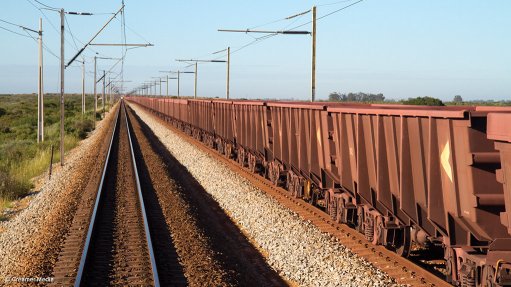Davies outlines importance of auto industry to future of manufacturing
Trade and Industry Minister Dr Rob Davies has stressed that South Africa does not have the luxury to stop supporting its automotive sector, as has been the case in Australia, where the industry has disappeared.
“The auto industry is key to the future of manufacturing in this country and whatever emerges from 2035 will be based on a significant level of support for [it] going forward. The real learnings that we are building on are not from countries that have decided they can simply abandon support for the automotive industry,” he noted during the National Association of Automotive Component and Allied Manufacturers show, in Durban.
Davies also called on all stakeholders to see the bigger picture and consider what was good for the sector as a whole rather than seek sectional benefits for the particular parts of the value chain that they represent.
One of the issues that needs to be confronted is local market optimisation. “We need to address the continued high import penetration and we also need to have greater alignment between local production and local demand,” he said.
Davies also touched on the dangers of increased protectionism in markets on which the local automotive sector had focused in the past. Stressing that these may not be “quite as available to us as they have been in the past”, he, nevertheless, said that slow but meaningful progress was being made towards the proposed Tripartite Free Trade Area agreement in Africa.
By the end of the year, tariff schedule negotiations will have been concluded with the East African Community bloc, and Egypt was not far behind.
Further, the Minister said localisation levels within the automotive sector were suboptimal and employment levels lacklustre, making increased localisation one of the most imperative aspects of future planning.
Because the automotive sector contributes 7.5% of South Africa’s gross domestic product and employs some 113 000 people directly, it is key to ensuring greater economic growth. The fact that the automotive components segment is the most labour intensive and accounts for 72% of this total makes it a critical part of the value chain.
As a result, the target for localisation is set to increase to 60%, from around 38% at present.
Davies said the intensive consultation and discussion that had taken place over the past 12 months, ahead of the creation of a masterplan for the industry, had revealed some critical issues.
This masterplan will culminate in the development of a support package for the automotive industry that will replace the Automotive Production and Development Programme (APDP), which was introduced in 2013 and expires in 2020. The new support package will run until 2035.
Davies said analysis had painted a mixed picture but had highlighted some progress.
On the positive side, there had been a 30% volume increase in light vehicle production, a 20% rise in exports of completely built-up (CBU) units, a 7% drop in imports of CBU units and a 34% rise in the value of components imports.
“But, while those are positive, we’ve also seen components imports rising very rapidly and surging to a historically high level of about R50-billion. Local content is at 38%. This is suboptimal,” he said.
Davies pointed out that, while there had been an increase in the rand value of components production from R35.2-billion in 2012 to R52.9-billion in 2015, local content as a proportion of overall sales had declined by 17%.
“We still have a very high import penetration of finished products which have no local input . . . That’s telling us we need to deepen the development of local content and local components [at the level of] manufacture. It’s not just about doing that in the existing original-equipment manufacturers (OEMs) that we have in our market, but also a question of trying to get more OEM investment so we have more production [to replace] imports of finished products,” he continued.
Davies said none of the stakeholders participating in the masterplan consultation process had objected to setting the localisation target at 60%.
Had this already been achieved, it would have created about 50 000 more jobs, as well as significant opportunities for smaller components companies to enter the industry.
At a press briefing following his presentation, Davies said the chance of creating a South African-branded vehicle was remote. However, the barriers to entry for components suppliers at lower tiers of the value chain were far less stringent.
This, he said, would contribute to industry transformation, which was “no longer optional”, owing to new black economic- empowerment legislation. The transformation imperative was a quid pro quo for those benefiting from the APDP and its successor.
Development of new infrastructure within the industry, as well as technology and the necessary skills development, was also important, said Davies.
“We need to establish a technology and skills road plan that takes account of the fourth industrial revolution. The introduction of digitalisation and the disruption that is occurring in production . . . [are] predicted to have a much more rapid disruptive effect as we move further forward.
“In the case of the automotive industry, we need to talk about [not only the] new technology as used in the production of motor vehicles, but also [that the] products themselves will increasingly have radically different technologies,” he said.
Comments
Press Office
Announcements
What's On
Subscribe to improve your user experience...
Option 1 (equivalent of R125 a month):
Receive a weekly copy of Creamer Media's Engineering News & Mining Weekly magazine
(print copy for those in South Africa and e-magazine for those outside of South Africa)
Receive daily email newsletters
Access to full search results
Access archive of magazine back copies
Access to Projects in Progress
Access to ONE Research Report of your choice in PDF format
Option 2 (equivalent of R375 a month):
All benefits from Option 1
PLUS
Access to Creamer Media's Research Channel Africa for ALL Research Reports, in PDF format, on various industrial and mining sectors
including Electricity; Water; Energy Transition; Hydrogen; Roads, Rail and Ports; Coal; Gold; Platinum; Battery Metals; etc.
Already a subscriber?
Forgotten your password?
Receive weekly copy of Creamer Media's Engineering News & Mining Weekly magazine (print copy for those in South Africa and e-magazine for those outside of South Africa)
➕
Recieve daily email newsletters
➕
Access to full search results
➕
Access archive of magazine back copies
➕
Access to Projects in Progress
➕
Access to ONE Research Report of your choice in PDF format
RESEARCH CHANNEL AFRICA
R4500 (equivalent of R375 a month)
SUBSCRIBEAll benefits from Option 1
➕
Access to Creamer Media's Research Channel Africa for ALL Research Reports on various industrial and mining sectors, in PDF format, including on:
Electricity
➕
Water
➕
Energy Transition
➕
Hydrogen
➕
Roads, Rail and Ports
➕
Coal
➕
Gold
➕
Platinum
➕
Battery Metals
➕
etc.
Receive all benefits from Option 1 or Option 2 delivered to numerous people at your company
➕
Multiple User names and Passwords for simultaneous log-ins
➕
Intranet integration access to all in your organisation


















